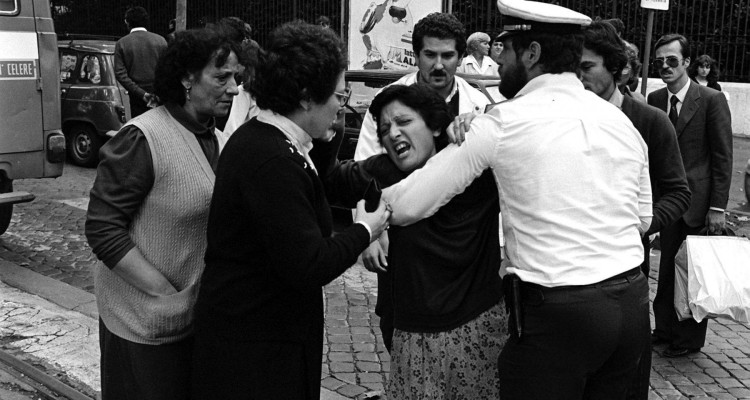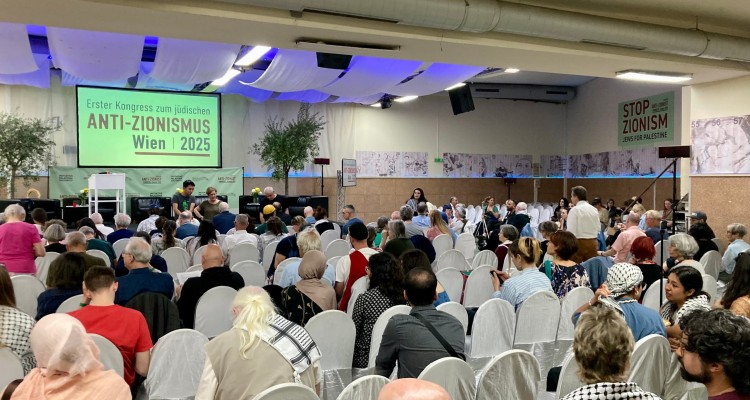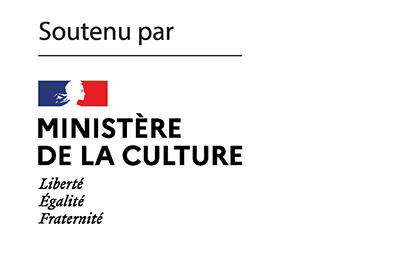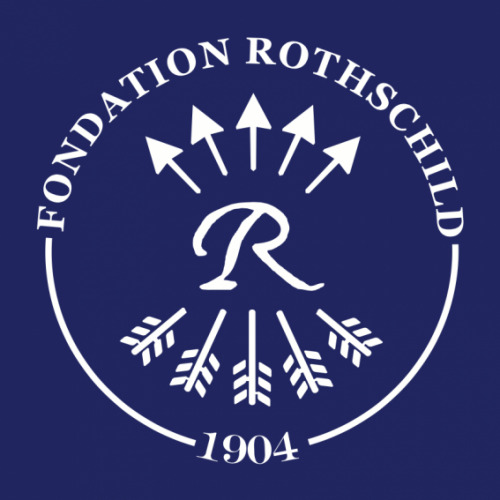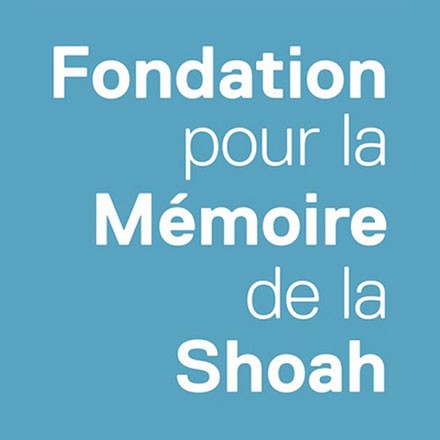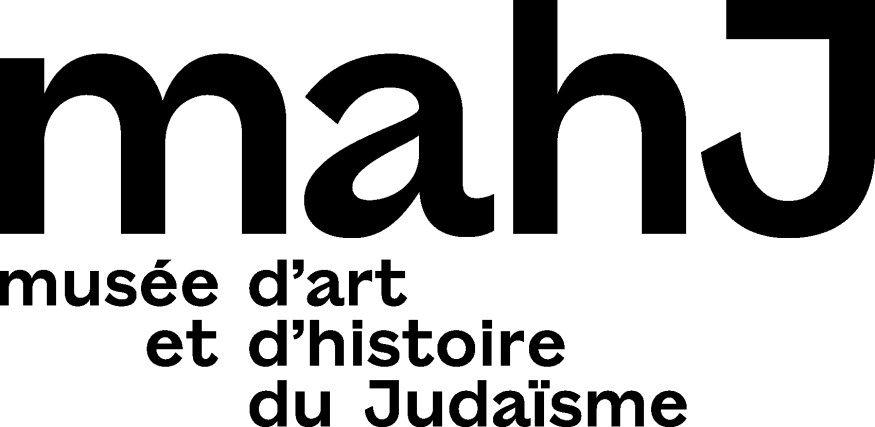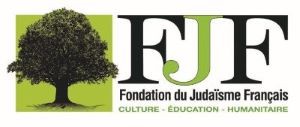On 3 October 1989, at around 6pm, Dr. Joseph Wybran, a leading doctor and president of the C.C.O.J.B, the Belgian Jewish federation, was shot at close range in the parking lot of the Erasmus hospital in Brussels. Thirty-three years later, justice has still not been served. Agnès Bensimon reviews for K. the twists and turns of an investigation into a murder whose treatment by the Belgian police and justice system raises questions. Until its latest development in March 2025, which has reignited disillusionment…
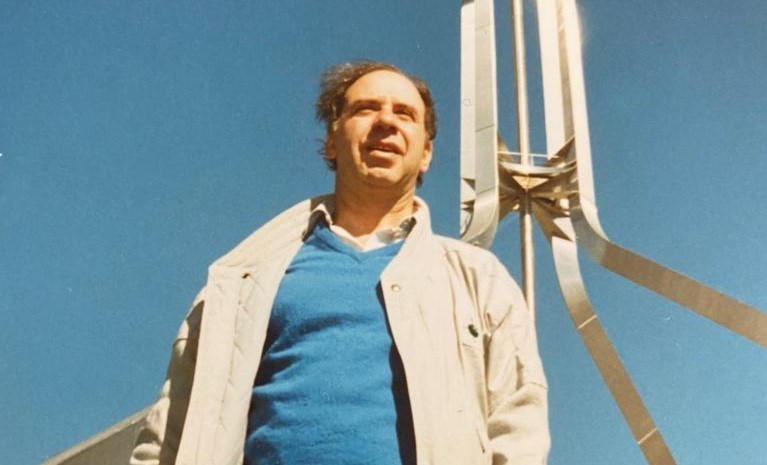
Update from the author (April 2025)
The investigation (June 2022)
An internationally renowned medical expert, president of the Coordination Committee of Jewish Organisations in Belgium (CCOJB) and of the Brussels section of B’nai Brith, known for his commitment against the establishment of a Carmelite convent on the site of Auschwitz-Birkenau, Joseph Wybran was murdered in the autumn of 1989. The murder caused considerable emotion in Belgium, where more than 5,000 people, including ministers, political leaders and church representatives, attended his funeral. Emmy Wybran-Sosnovski, his widow, whom we met in Tel Aviv where she now lives, remembers that indelible evening when her husband was taken from her. She tells us: “On Tuesday 3 October 1989, I was returning from work with a client whom I had invited to dinner at the house where Jo was to join us. When I got home, the cleaning lady told me that I had to call the Erasmus Hospital urgently. I thought my husband had had a stroke, a heart attack, but when I phoned I was simply told, “Look, Jo has had a little accident, don’t worry, come here.” When I arrived, I was greeted by a whole bunch of doctors, heads of departments, seven or eight of them. I began to understand that something serious had happened. Professor Jacques Brotchi, a neurosurgeon and long-time friend, took me by the arm and led me to his office. He asked me questions that left me perplexed: “Had Jo received any threats? By mail? By phone? Did he have any altercations with anyone? In the face of my incomprehension and denials, he added: ‘I am obliged to tell you the truth. He was shot twice. He is clinically dead.’ I got carried away: ´We must take him to the United States for treatment!´ But Jacques Brotchi dashed my hopes. I stayed with him for many hours, he was very human, very gentle. He asked me to go and rest and I returned at two in the morning. At four o’clock I learned that my husband had died. I didn’t know where I was. It was unreal, a nightmare! I could never have imagined that my husband could be the victim of a terrorist act.´”
Who was Joseph Wybran?
Joseph Wybran was born in Brussels in May 1940. The son of craftsmen of Lithuanian origin who immigrated to Belgium in the 1930s, during the war he was hidden by a Belgian family from the Ardennes, with whom he kept close relations throughout his life. Emmy says: “I never knew the name of the family, nor the name of the village. These admirable people did not want to be honored at all, considering that what they had done was natural and did not deserve any reward.” Joseph respected their wishes and went alone to their home. As a teenager, he attended the religious Zionist youth movement of Bnei Akiva, then entered the Faculty of Medicine of the Université Libre de Bruxelles and obtained, in 1965, the title of Doctor with Great Distinction, also winning the Faculty’s Special Prize. During his university studies, he was also active in the Union of Jewish Students of Belgium (UEJB), of which he became president. During his military service, Joseph served as a medical officer in the Belgian army in Germany. His dedication earned him a honorable mention in the army order of the day for bravery.
In 1970, Joseph Wybran moved to the United States, where he completed his clinical training at the University of California and the Veterans Administration Hospital in San Francisco. He continued his research on cancer and contributed to important advances in the knowledge of the disease. In 1974, back in Belgium, he continued his pioneering work in psycho-neuro-immunology and became involved in AIDS and cancer research. He also founded the Red Cross transfusion center at the Erasmus Hospital. In 1977, his research enabled him to obtain the title of Associate Professor of Higher Education at the University, and in April 1982, he became the head of the immunology-haematology-transfusion department at Erasmus. In the middle of the 1980s, his future in research was looking very promising as he was leading numerous Belgian and European projects.
At the same time, in December 1988, Joseph Wybran became president of the C.C.O.J.B. At the age of 47, he divided his life between his work at the hospital, his teaching at the ULB and his involvement in Belgian Jewish community life. He was particularly involved in the Auschwitz Carmelite case, the greatest crisis in relations between Jews and Christians since the Holocaust. As chairman of the Belgian Auschwitz Committee, he met Cardinal Józef Glemp in Poland to find an acceptable solution. He also campaigned against the construction of a supermarket on the site of the extermination camp. Two weeks before his murder, during a demonstration organized in front of the European Parliament on the issue of the Carmel, he was interviewed by Belgian and European television stations. This media exposure reinforced his wife’s fears. At that time, after the assassination of Sheikh Obeid in August 1989 in Israel, the Abu Nidal group was openly threatening to attack Jewish personalities in Europe. Emmy suggested to her husband to get a bodyguard. “Do you think! I’m not important enough to be a target,” he replied.
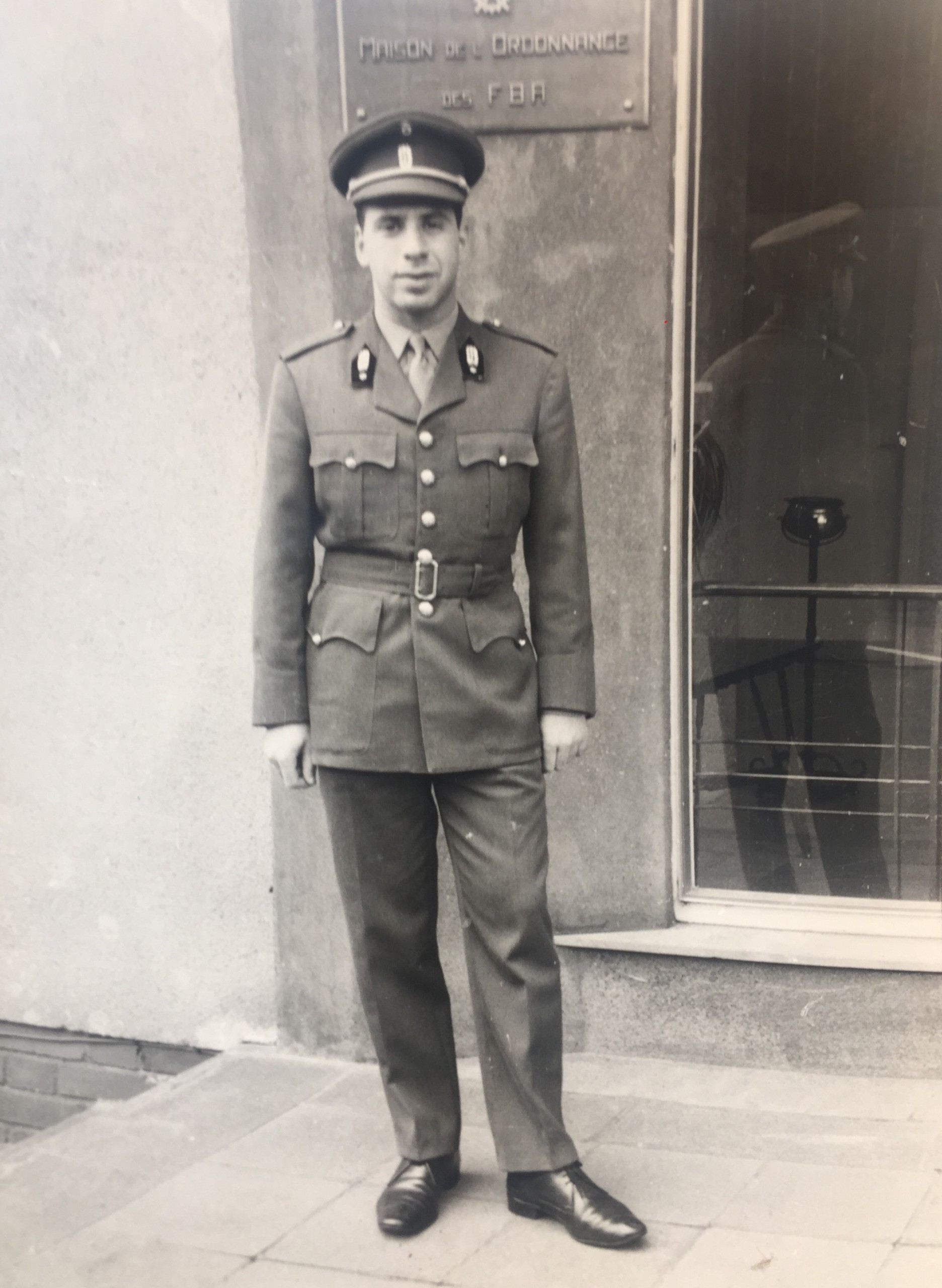
Who murdered Joseph Wybran?
On the occasion of a large ceremony to honor Joseph Wybran, on 7 October 2014 at the Université Libre de Bruxelles[1], Jacques Brotchi gave this testimony: ‘I operated on my friend, my colleague, on that evening of 3 October 1989. At the time of his murder, I was in my office, dictating mail. The window was open, overlooking the car park. I heard nothing. The emergency services called me: ´Jo Wybran has a head injury.´ I ran downstairs and saw my friend unconscious. A bullet had passed through his brain at close range. I tried to save his life. I didn’t succeed. He died a few hours later. Later, I was called by the coroner who said: ´Professor Brotchi, won’t you come down to the car park? The investigators are there.´ They didn’t ask me any questions, they didn’t ask me anything. However, as a neurosurgeon, when someone is shot in the head, I know where it enters, I know where it leaves.”
From the very first hours, the investigation was badly handled: no one thought it necessary to secure the premises. The parking lot reopened the next morning. The bullet that killed Jo Wybran was never found[2]. An ambulance driver anonymously testified to having seen three suspicious individuals lurking around a few days before. This allowed the police to draw up a sketch of one of them[3]. This same ambulance driver reported to the police again a few days later, stating that he had recognized “the man with the beard” in Joseph Wybran’s funeral procession, while watching the TV news. “The sketch was never released,” says Emmy Wybran, “the investigators showed it to me alone. I could not identify this man. He was not an acquaintance.”
Two days later, a mysterious organization, Jund al-Haaq (Soldiers of Justice), claimed responsibility for the attack from Beirut. The Belgian anti-terrorist services were familiar with this organization: Jund al-Haaq was one of the many aliases used by the Fatah Revolutionary Council, the organization of Abu Nidal, the “Father of the struggle” in Arabic. These “Soldiers of Justice” first made themselves known on December 18, 1988, by claiming responsibility for the abduction of the Belgian doctor Jan Cools in Lebanon, and later for the hostage-taking of the French-Belgian Houtekins-Kets family. On 31 March 1989, the organisation admitted responsibility for the assassination of Abdullah Al Adhal, the imam of the Grand Mosque of Brussels, and his librarian. Prior to that, it had also committed a series of other anti-Jewish acts – such as the burning of a Jewish site in Copenhagen – and attacks in Thailand and Pakistan against Saudi diplomats.
The modus operandi of Joseph Wybran’s assassination is unequivocal: all anti-terrorism specialists have been unanimous in concluding that he was the victim of a trained killer who was well informed of the doctor’s schedule. Law enforcement experts recognize the features of an international terrorist attack, including logistical support to enable escape and provide a safe haven for the assassin. Once the attack had been classified, the security, police, gendarmerie and intelligence intelligence services each launched their own investigation, separate inquiries that probably languished for want of collaboration. Despite the links between the Great Mosque case and that of Dr: Wybran, which had an identical modus operandi and comparable ballistics, the investigation around the main lead went nowhere quickly. All other leads were then considered – revenge, crime of passion, settling of scores in a case of stolen paintings, and even the possibility that Wybran was a Mossad agent … – but they were just as quickly abandoned[4]. Years passed and the investigation stalled.
Seventeen years later, however, in January 2006, an assistant prosecutor, Bernard Michielsen, tried to use the famous sketch of the suspect to crack the cold case. He was not successful.
A confession reopened the investigation,
Emmy Wybran confirms: “Until 2008, I was kept informed of little or nothing about the investigation. It was then that Abdelkader Belliraj confessed, revealing that he had prepared and committed the attack against my husband, on the orders of Abu Nidal. I immediately filed a civil suit with the attorney Michèle Hirsch. For three and a half years, I never stopped researching, cross-checking information, tracking down every article, every line published about the assassin, about the affairs in which he was involved. It was like an obligation, it was stronger than me. I understand perfectly today the father of the boy who lost his life at the Bataclan and who is following the case step by step, as I did too. Not out of hate, but to understand. He can’t live without knowing.”
This break in the Wybran affair occured in 2008 with the arrest in Morocco of around thirty Islamist activists suspected of belonging to the Al-Qaeda network and plotting against King Mohammed VI. Among them – the presumed mastermind of this network – was a 51 year old man called Abdelkader Belliraj. This Moroccan, who has also held Belgian nationality since June 2000, was arrested in Marrakech on 18 January, as he was leaving the Fashion Hotel, which he managed even though it was registered in his brother’s name. Belliraj regularly traveled to Morocco to supervise the business of the three-star hotel in the city center, which hboasts café with and patio. According to Moroccan police sources, the place was known as a den of outlaws. Belliraj was arrested and interrogated in Temara prison for 12 days, then in Rabat and finally in Casablanca. A month after his arrest, the Moroccan government announced on 18 February 2008 the dismantling of a clandestine jihadist terrorist network, of which he was the leader.
Belliraj had a long rap sheet and CV: suspected terrorist leader, assassin, gangster, informer – and hotelier. The peregrinations of this man over a quarter of a century represented in miniature the evolution of radical Islam in the same period. The various investigations suggest that he met Ayatollah Rouhollah Khomeini in 1981 and shared a table with Osama bin Laden just ten days before the September 11 attacks[5]. A leading ideologue in Moroccan radical circles and henchman of the Palestinian mercenary Abu Nidal, he was also a fundraiser for al-Qaeda. But at the same time, Belliraj also became a paid informant for Belgian State Security: a fact that will prove gum up the works of the judicial machine.
Abdelkader Belliraj’s confessions during his interrogations in 2008, recorded in a report by the Moroccan examining magistrate, shed light on the murder of Joseph Wybran. Belliraj states, among other things, that he came into contact with the terrorist organisation of Abu Nidal during his stay in Algeria in 1988. One of his tasks was to collect information on Saudi personalities in Belgium. After three months of investigations into the Belliraj case, during which he attended the trial, journalist Kristof Clerix, a specialist in the secret services, published a series of very detailed articles in the magazine MO* (Mondiaal Nieuws). He traces the terrorist’s career from 1971 to 2009. The information on the six murders in Belgium is taken from the interrogations in the possession of the investigating judge.
A series of murders
Belliraj confessed in his statement that he executed or ordered the execution of six Jewish and non-Jewish personalities on Belgian territory between 1988 and 1989, according to the following chronology:
On 23 July 1988, Raoul Schouppe, a herbalist, was shot dead behind the counter of his shop near the Gare du Midi in Brussels. Schouppe was a former soldier. He was the subject of rumors in the Moroccan community in Brussels, maintaining that he was a Moroccan Jew who was ‘a bit of a sorcerer’, referring to the products he sold, which were reputed to be supplied only by ‘Moroccan sorcerers’. In reality, he was not Jewish, nor was he a sorcerer. Belliraj confessed to his murder during the interrogations: “I grabbed him through the hole in the window that separated us. I shot him in the head. Then, with the commando, we went home, without anyone seeing us.”
On 16 August 1988, the gay Jewish tailor Marcel Bille was also killed by a bullet in the head. A hiker discovered his lifeless body in a forest in Braine-le-Château, in the district of Nivelles. In his interrogation on 16 February 2008, Belliraj said: ‘He paid Moroccan students who did not have much money for sex. One Sunday morning in 1988, I went to a café near the Gare du Midi in Brussels where I knew the Jew would be. I started a conversation with him and made an appointment for that evening. I made him believe that I wanted to sleep with him.” Belliraj allegedly drove Bille to a forest near Brussels. “I waited for him not to pay attention for a while. I pointed my 9mm GP at his head and shot him in the head. Then I pushed his body out of the car with my two feet and left him there. According to him, through these first two killings, Belliraj sought to “get experience.”
On 29 March 1989, Imam Abdallah Al Ahdal and his deputy Salem al-Buhairi were shot dead at the Great Mosque by the “Soldiers of Justice”. Belliraj sayd: “Al Ahdal had criticised the fatwa against Salman Rushdie. He was targeted at the request of Abu Nidal’s organization, with Abu Ali the Palestinian, Nidal’s representative in Algeria, as intermediary. When we gathered all the information about him, we came to the conclusion that the best place to kill him was the Islamic center, which was open to the public. I asked my accomplices to eliminate him.”
Then, on 20 June 1989, the Egyptian Samir Jah al-Rasoul, a driver for the Saudi embassy, was murdered in the lobby of his building in the Ixelles district. The attack was claimed by the “Free People’s Organisation of the Arabian Peninsula”. “I was watching the surroundings of the house. I threw the murder weapon down the drain afterwards. I then contacted Abu Ali the Palestinian and informed him of the result of the operation. Afterwards, I learned the name of the victim from the media. We had killed the wrong target. The “right” target of the group was in fact the Saudi Ambassador.
Finally, on 3 October 1989, it was Dr Joseph Wybran’s turn. The “Soldiers of Justice” again claimed responsibility for the attack. Belliraj explained to the Moroccan police in 2008: “We wanted to kill Wybran because he defended radical Zionist views. On 3 October 1989, I drove my car to the hospital where he worked. My accomplice, A. M., shot Wybran. We fled together in my car. I threw the murder weapon into the sewer. After the operation, I informed Abu Nidal’s group in Algeria.” With the assassination of Joseph Wybran, the murderous series of attacks committed in Belgium by Belliraj and his accomplices on behalf of Abu Nidal came to an end.
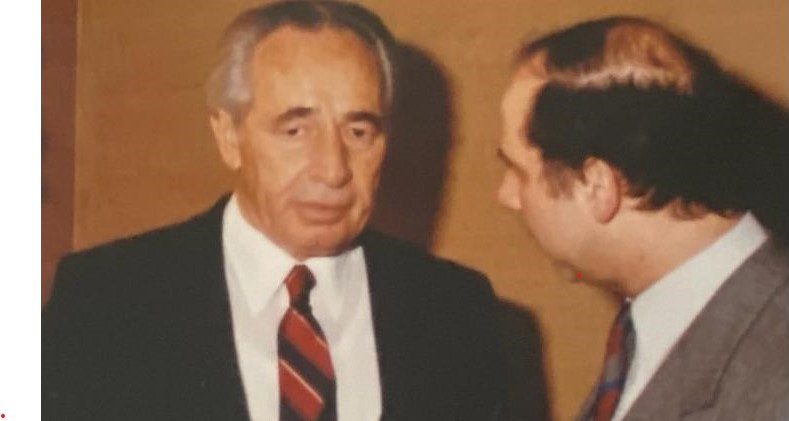
Belgian reactions to the revelations
In Belgium, following Abdelkader Belliraj’s confession, the federal prosecutor’s office finally connected the dots the six assassinations perpetrated on national territory and opened a file for terrorism. Emmy Wybran then turned to Michèle Hirsch to represent her as a victim, while the CCOJB filed a civil suit. “I asked for the five files on the Brussels murders and the one in Nivelles. They had not been opened for a long time and were literally covered in dust. Correlations could have been made long before the confessions. Ballistics, for example: six victims, three weapons, the same ones! These files were never cross-checked”, the lawyer explained at the ceremony in memory of Dr Wybran, on 7 October 2014, at the ULB.
Indeed, the murderers committed their crimes with 7.65 mm pistols and ammunition purchased from the Sellier and Bellot brand from Prague. “The bullets were all fired into the head, almost at point blank range. The first two murders were carried out with the same weapon, the “Saudi” murders with a second and the Wybran murder with a third, as these weapons had never been used in other criminal cases. Finally, the claims of Abu Nidal’s group explicitly established a link between the two attacks”, sayd Hirsh.
On 13 November 1991, Belliraj’s name had appeared in the “Mosque” file, in a report by the Brussels Judicial Police relating an anonymous report linking Belliraj to the murder of Al Ahdal and Bahairi. A few days before the murder, Belliraj had bought two 7.65 mm pistols with silencers, according to the informant. For its part, the Groupe Interforces Antiterroriste (GIA) suspected him of being close to the Iranians and the El Jihad movement, which had claimed responsibility for the assassination of President Anwar Sadat. The local police in turn provided a list of activities considered suspicious and the investigating judge launched a search of Abdelkader Belliraj’s home in Molenbeek: to not avail. Similarly, his two hearings did not yield any evidence. His dossier also went back to the filing cabinet.
The arrest and confession of Belliraj in 2008 led Morocco and Belgium to cooperate, but the context was delicate. While the Belgian police were informed of the arrests on the same day, Belgian State Security said that it had learned the news through the press – a fact confirmed by the Intelligence and Security Services Monitoring Committee but denied by Morocco. Result: the head of the organization, Alain Winants, was furious and tensions with the Moroccan DGED (Directorate General of Studies and Documentation) were palpable[6]. The fluidity of cooperation suffered.
“From then on,” continued Hirsch, during his speech at the ULB, “several rogatory commissions were organized by Belgian police officers and magistrates in Morocco, in 2008, 2009 and 2010. The Belgian files are communicated to Morocco. In Belgium, investigative duties were carried out in February 2008, a few days after Belliraj’s hearing. A search was carried out at his home in the town of Evergem, in Flanders. Among the writings, a list written in his handwriting was discovered, containing the names of six Jewish personalities, including that of Joseph Wybran’s predecessor at the CCOJB, Markus Pardès.”
The Moroccans, for their part, issued fourteen international arrest warrants and requested that the persons named by Belliraj as having participated in the six attacks be searched and interviewed. Although Belgium searched and interviewed all the people concerned on the same day, 27 November 2008, it refused to extradite them. There is still today no extradition agreement between Belgium and Morocco for Belgian nationals, yet the majority of the persons concerned had dual nationality.
As the case became clearer, Belliraj denounced one man: A.M., who was responsible for shooting Dr Wybran. When questioned, the suspect claimed not to have been present in Belgium on 3 October 1989; a version cast into doubt by several sources[7]. To this day, A.M. still lives in Belgium, free.
On the Belgian side, a new element complicated the work of justice. During a rogatory commission, Belliraj claimed to have been kidnapped and tortured by the Moroccan services[8]. His confession, extracted under duress, would therefore not be admissible for Belgian justice. Belliraj’s lawyer in Belgium, who has never been allowed by Moroccan authorities to visit his client has publicly advanced this thesis on several occasions: “My client was kidnapped, confined and tortured.” The prosecutor also stressed the risk that the confessions were made under torture. The accused and his counsel chose their line of defence and have never deviated since, waiting for the statute of limitations to kick in.
Sentenced in Morocco, statute of limitations in Belgium
In Morocco, Belliraj was sentenced on 27 July 2009 to life imprisonment for arms smuggling, money laundering, terrorist activities and for the six attacks committed in Belgium, on the basis of Belgian files communicated to the Moroccan judicial authorities. And in Belgium? Hirsch, the lawyer for Emmy Wybran, has spoken out many times in the media on this subject: “Since 2010 – 2011, we have not extradited, we have not prosecuted, we have not arrested. In Belgium: nothing!”
However, an investigative journalist from the popular daily La Dernière Heure had published on 2 January 2009, under the title Les tueurs de Belliraj, the names of the six members of his terrorist cell. “One morning, quite early on, the doorbell rang,” says Emmy Wybran. “A man I don’t know is standing on my doorstep. He tells me that he has come to reveal to me, before they are published, the names of my husband’s killers. It was Gilbert Dupont, from La Dernière Heure.” Six men living in Belgium, against whom Moroccan justice had issued an international arrest warrant, and whom Belgium refused to extradite. In addition, the Federal Prosecutor’s Office was constantly trying to obtain the closure of the “terrorism” file opened in February 2008, for “absence of charges and known perpetrators”. But the Indictments Division did not follow the conclusions of the federal magistrate. In May 2016, it requested a further investigation, including from State Security, which was ordered to disclose classified and secret documents concerning the informant Belliraj. The Organe de Coordination pour l’Analyse de la Menace (OCAM) finally handed over the file that Hirsch had been requesting for years. “But the documents had been redacted,” she publicly regretted, “and did not allow the case to progress. After one postponement and another, the thirty-year statute of limitations was finally reached on 24 December 2020.

What to do with our agent?
The Dutch-language press was the first to investigate and disseminate a lot of hard-hitting information. On 29 February 2008, two media outlets, VTM Nieuws and De Standaard, revealed that Belliraj had been an informer of Belgian State Security for years. He had been recruited by the State Security section in Ghent and worked for the “Muslim Affairs” cell, He was paid for the information by means of quasi monthly salaries[9]. The news came as a bombshell. Alain Winants, General Administrator of State Security, lodged a complaint against X because of the leak. A committee was set up to investigate the matter, without addressing the question of whether Belliraj was indeed an informer or not. However, as early as the beginning of the 1980s, the Belgian Security Service had already registered Belliraj as a pro-Iranian Islamist extremist and an opponent of the Moroccan king.
In the light of these revelations, the attitude of the public prosecutor’s office raises questions. Is the fact that Abdelkader Belliraj was a paid informant from 2000 onwards, despite his activities (which had led to the refusal of his application for naturalisation on two occasions), the cause? Or is it the revelations about his role as head of Abu Nidal’s network in Belgium, when an agreement had been reached between the Belgian state and the Fatah-RC leader in order to preserve territorial tranquillity? The journalist Georges Timmerman, editor in chief of the information website Apache, and author of the well-sourcedd book, “Het Geheim van Belliraj” [The Secret of Belliraj] which specifies the conditions of the deal, concluded in 1991, between the Kingdom of Belgium and the terrorist movement of Abu Nidal. According to him, the conditions were the following: cash, including $6.6 million for Palestinian projects in the Bekaa Valley in Lebanon, the sponsoship of two Palestinian students in Belgium, and, as it became known in January 1991, the release of Said Nasser, the author of the attack against Jewish children in Rue Lamorinière in Antwerp on 27 July 1980, in exchange for the release of Dr. Jan Cools and the Houtekins-Kets family. And of course, in return, Abu Nidal committed himself not to strike on Belgian soil.
Indeed, Belliraj had been observed by the Belgian services in 1986, 1988, 1990, 1993 and 1999 when they were interested in the Shiite profile of the Moroccan opponent. The Belgian anti-terrorist cell had also targeted Belliraj’s profile, giving him the nickname of El Palesto – because of his attachment to the Palestinian cause[10]. Belliraj’s naturalization had been rejected in 1998, on the negative advice of the security services. Two years later, at the time Belliraj placed his recruitment, this service issued two different opinions within a week of each other. Negative on 6 June: “Belliraj was known to our services for his activities within the Algerian and Moroccan radical Islamist movement. Positive on 13 June: ‘During the 1980s, Belliraj was known to our services for his activities within pro-Iranian Moroccan circles. Since then, however, he has not attracted our attention, neither in this context nor for any other activity. And the service concludes: ‘Belliraj has a clean criminal record’.
However, this information was largely refuted by several police reports that mention numerous entries in Belliraj’s criminal record: in 1986 for assault and battery and fraud within the Confederation of Christian Trade Unions, in 1987 for breach of trust and suspicions of arms trafficking, false passports and “membership of a radical organisation. The icing on the cake, according to the investigative journalist of La Dernière Heure, Gilbert Dupont, citing police sources, Belliraj was the mastermind of the Brink’s robbery perpetrated by a six-person commando group on the tarmac of Findel airport in the Grand Duchy of Luxembourg on 17 April 2000, with an estimated loot of 17.5 million euros. According to the same source, he also took part in the escape, in March 2003, of his accomplice, Abdellatif Bekhti, who was serving a 20-year sentence in the Luxembourg prison of Schassig[11].
The revelations about Belliraj’s naturalization and recruitment by the security services have provoked strong reactions in Belgium. In a provisional report on the Belliraj affair, the Standing Committee on Intelligence Oversight (Comité R) questioned whether the security services had facilitated his Belgian naturalisation. However, during the investigation by Committee R, it appeared that the first negative opinion had “inexplicably” disappeared from the archives of the Ghent public prosecutor’s office[12]. A press release on behalf of the security services denounced “unfounded rumors”, and stated: “the two letters (of 6 and 13 June – NDLA) do not contradict each other: the second letter is an update of the first”[13]. The fact remains that Committee R noted that it had not received an explanation for the fact that two opinions were issued eight days apart.[14]
In addition, numerous written questions to the Minister of Justice concerning the gray areas of the Belliraj case were regularly submitted by parliamentarians, senators and deputies from different parties, both French and Dutch speaking. Among many others, Senator Anke Van dermeersch tabled on 13 January 2012 a “Proposal for a law amending the legislation concerning the abolition of State Security” (bearing number 5- 1435/1) preceded by a relentless indictment of all the blunders attributed to the security services, particularly in the Belliraj case. [15]
From the point of view of State Security, there is therefore no reason to doubt the question of Belliraj’s naturalisation. It neither invalidates nor confirms the fact that he may have been an agent recruited as authorised by the law in order to preserve the security of each of his informants. As for the existence of a terrorist network led in Belgium by Belliraj and responsible for the six unsolved murders committed on national territory, following his confession in the framework of the investigation carried out in Morocco, the security services published its conclusions in its annual report for 2008, published online in 2010: “The Sûreté de l’Etat [security services] had no knowledge of the BELLIRAJ network as presented by the Moroccan authorities. However, several of its presumed members were known to us for having been active in radical Islamist circles in the 1980s and 1990s. Although it was aware of links between some of these individuals, State Security was never in possession of evidence of their joint involvement in any terrorist-related activity or of a link between any of them and the six “Belgian” murders for which the network is accused. The elements put forward by Morocco have therefore not made it possible to demonstrate indisputably the existence of a network and its involvement in six murders in Belgium.”[16]
The Federal Prosecutor’s Office relied on these findings to claim that the criminal investigation against X was dismissed, as we have seen.
A final twist in the case, which was to be reported in the Belgian press, occurred on 18 July 2018, when Lahbib El-Mahmoudi was arrested while on holiday at the Hotel Sebino in Sarnico, northern Italy. He is one of the six members of the Belliraj network. Believing himself to be definitively safe from prosecution, even while the international arrest warrant issued against him by Morocco was still in force, this Belgian-Moroccan national had let his guard down. The Italian press reported on 21 July his surprise arrest by the carabinieri and his extradition to Morocco where he will be questioned about the assassination of the imam of the Grand Mosque of Brussels, his secretary and the driver of the Saudi Embassy. On 25 July, the RTBF headlined: “Will the arrest of Lahbib El-Mahmoudi reopen Belgian cold cases? And in a hard-hitting article in La Dernière Heure on 27 July, entitled “Belliraj wanted to bomb Dr Wybran’s funeral”, Gilbert Dupont reported that during his interrogation, El-Mahmoudi had revealed that Belliraj wanted to strike, in addition to the assassination, the funeral procession of Dr Wybran, in the cemetery. A last gasp that had no effect. The ‘cold cases’ remained as such.

In memory of Joseph Wybran
Dr. Joseph Wybran could never have imagined that his destiny would end with the bullet of a cold, calculating and opportunistic killer, at the center of a terrorist network with sprawling ramifications woven over a quarter of a century. His family, friends and colleagues would never have believed that the investigation and justice system would fail. It is true that Belliraj is now serving his life sentence in a Moroccan prison. But his accomplices, covered by the statute of limitations, are living quietly in Belgium.
Since the national funeral organised by the Belgian state, tributes have been paid to him regularly. The boulevard in front of the Erasmus hospital has been named in his honour, as has an auditorium at the Université Libre de Bruxelles. A commemorative plaque has been placed on the university campus. In Israel, in the Belgian Forest in Neve Ilan, a grove was planted in his memory on the 20th anniversary of his death.
Following the statute of limitations in Belgium, the last resort would be to take the case to the International Court of Justice in The Hague, but the civil parties, unable to bear the burden of a new procedure, have given up. Resignation has prevailed, despite the anger and shame that everyone still feels. Justice was not done.
Agnès Bensimon
Notes
| 1 | The entire ceremony can be seen at this link https://youtu.be/gt7mmcE0ic4, |
| 2 | Cf. Archives of the French daily Le Soir: 6/10/1989. “The investigation into the attack: mission impossible?” Jean-Paul Colette, Guillaume Alain. 9/10/89, “A-t-on retrouvé près d’Erasme l’auto”, Guillaume Alain. |
| 3 | Marie-Cécile Royen. Le Vif-L’Express n°49, 6/12/2013. “L’affaire Belliraj: un polar sans fin” |
| 4 | Each of these eliminated leads is detailed in the only book devoted to the case by the Dutch-speaking investigative journalist Georges Timmerman (ed. Houtekiet, 2011): Het Geheim van Belliraj (The Secret of Belliraj). |
| 5 | In his confession to the investigators, Judge Chentoufi’s document contains the following information: “in 1980, Belliraj went to Tehran to celebrate the first anniversary of the Islamic revolution. The Iranian embassy paid for the trip. Belliraj attended two weeks of seminars on the Iranian revolution in a hotel.” Cf Kristof Clerix. MO* Flemish magazine: “’In 2001, Belliraj travelled to Afghanistan via Pakistan, where he stayed for a fortnight. In Kandahar he says he met Mohamed Attif, the right-hand man of Osama Bin Laden. He asked Belliraj to find people with knowledge of chemistry and biology, to make biological and chemical weapons. Attif invited Belliraj to a dinner with Osama Bin Laden in Kandahar, where Al Zawahiri was also present. From Belliraj’s confession to Moroccan investigators. The very serious Dutch-language daily De Morgen reveals on March 7, 2008, under the pen of Georges Timmerman and Kim Herbots “that a delegation of American agents from the FBI and the CIA came to Morocco at the beginning of March to investigate Belliraj’s terrorist network. The link between the latter and al-Qaeda and Hezbollah is now established, a police source said. The purpose of the US mission is to compare DNA samples collected from al-Qaeda attacks in recent years.”https://www.demorgen.be/nieuws/fbi-en-cia-verdenken~bbe84246/ |
| 6 | In the series of articles devoted to the Belliraj affair, Kristof Clerix publishes in the magazine MO* of October 21, 2009 is a history of the evolution of relations between the Sûreté de l’Etat, the DGED and the Moroccan DGST, from the 1970s to 2009. |
| 7 | Read in particular the article by Philippe Brewaeys in the weekly M magazine of 14-20 November 2014: “Six morts sans ordonnance”. Survey carried out with the support of the Fund for Journalism in the Walloon Federation – Brussels. |
| 8 | A letter from Belliraj: “I was tortured” was published in full by the newspaper Le Soir on 14 November 2008. |
| 9 | Details provided by the Dutch-language daily De Morgen, citing police sources. Edition of 18 October 2008. |
| 10 | Kristof Clerix. 10/09/2009. Testimony of a Belgian federal police inspector who followed Belliraj for more than 20 years. |
| 11 | Gilbert Dupont, La Dernière Heure. 14/03/2008 |
| 12 | The Belgian press quotes a dispatch from the Belga agency (equivalent to AFP) of 19/03/2008 https://www.rtbf.be/article/un-avis-negatif-sur-la-naturalisation-de-belliraj-a-disparu-522330 |
| 13 | The security services de press release was published the same day |
| 14 | Senate Activity Report 2009 |
| 15 | https://www.senate.be/www/?MIval=publications/viewPub.html&COLL=S&LEG=5&NR=1435&VOLGNR=1&LANG=fr. See also the written question n°4-5700 of 7/12/2009 by Senator Paul Wille, equally critical. |
| 16 | Annual Report 2008. Chapter 2, pages 34 and 35 – section TERRORISM – 1) BELLIRAJ CASE |
